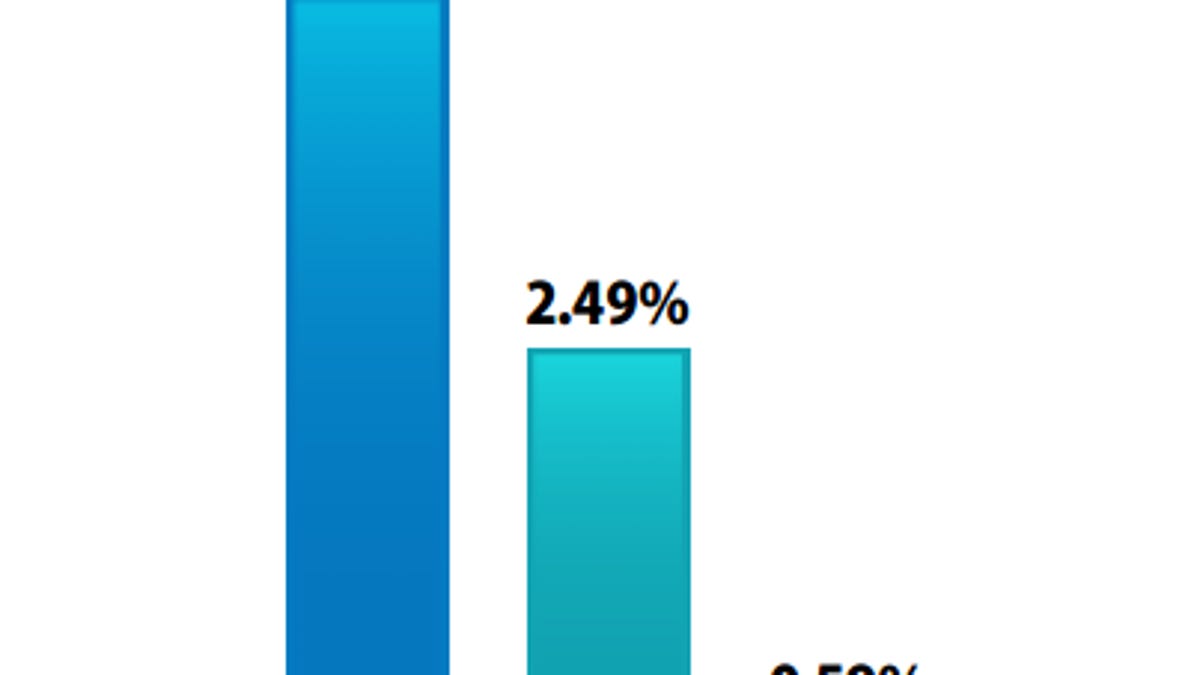Social still can't beat search in online shopping
Although the amount of site traffic generated by social media has more than doubled, it's still no match for search engines or e-mail referrals.

Social media's traffic contribution to online shopping sites increased 77 percent in one year, but few users actually buy anything, according to a new report published today by marketing firm Monetate.
The firm's study shows that search engine and e-mail referrals are more than holding their own against social media sites when it comes to generating sales in the second quarter of 2012.
Social media sites only contributed to 2.85 percent of online shopping traffic in the second quarter, but the figure did grow a substantial 77 percent from the beginning of 2011 to the beginning of 2012.
Facebook, which generates the most traffic referrals among social networks, had no trouble getting customers to view products on other sites, but nearly half of those visitors would leave the site without visiting another page. The percent of customers who did buy something when they stayed? Less than half a percent.
By contrast, Google had a conversion rate (the measurement of actual sales from traffic) of 2.44 percent, and e-mail has a rate of 4.25 percent.
Monetate CMO Kurt Heinemann said that social media has less value overall and that companies should recognize this. Shoppers still prefer to turn to search when they want to buy something.
That doesn't mean that companies shouldn't be on social media, he said, particularly because it may cost the company nothing to create its social media presence.
"It just means we should be very careful of the hype," Heinemann said. "You want to factor in that it doesn't convert as high as a typical source."
The report also offered numbers on the conversion rates for different devices, operating systems and browsers.
Some tidbits from the report:
- The use of mobile devices, like smartphones and tablets, to browse online shopping has increased from to 5.89 percent to 11.6 percent -- a trend that will continue, Heinemann said.
- Smartphones are more often used for browsing and looking at single items, but not for purchasing. Tablets and desktops had higher conversion rates. Heinemann said this is because smartphones don't have the real estate to provide all the information necessary to make shoppers comfortable with a purchase.
- Apple's iPad has a higher percentage of Web site visits, but the conversion rates are about the same as Kindle Fire and Android tablets.
- Despite growth in iPhone market share, shoppers on Android smartphones continue to have a higher conversion rate than iPhone users.
- Internet Explorer's hold on the browser market continues to drop -- from 49.37 percent to 37.5 percent over the course of a year. In contrast, Chrome's market share grew from 10.89 percent to 17.15 percent.
Check out the full report below.

